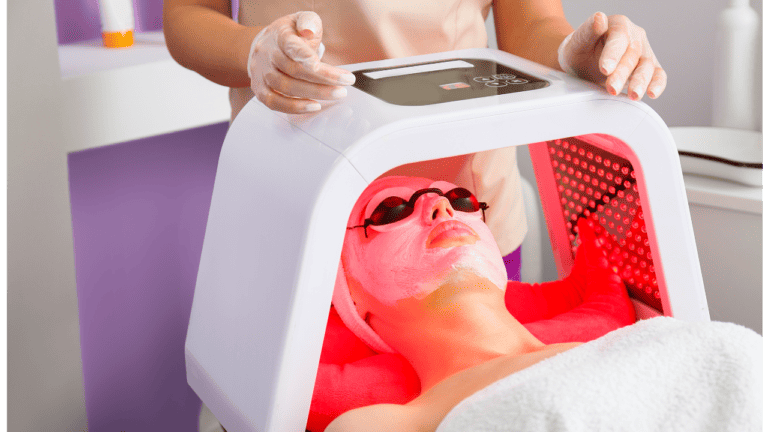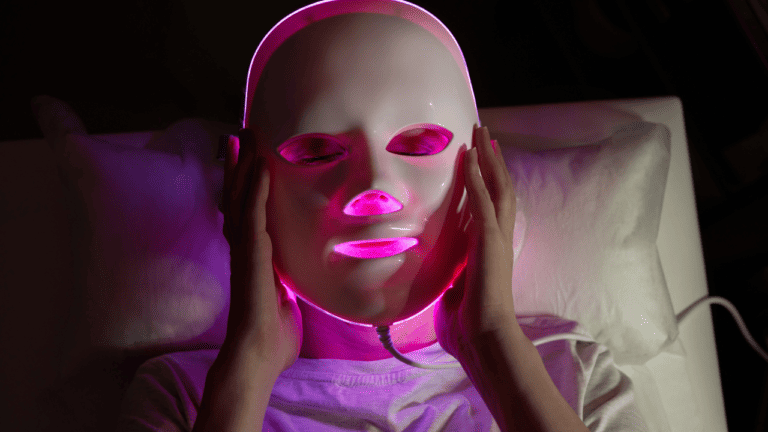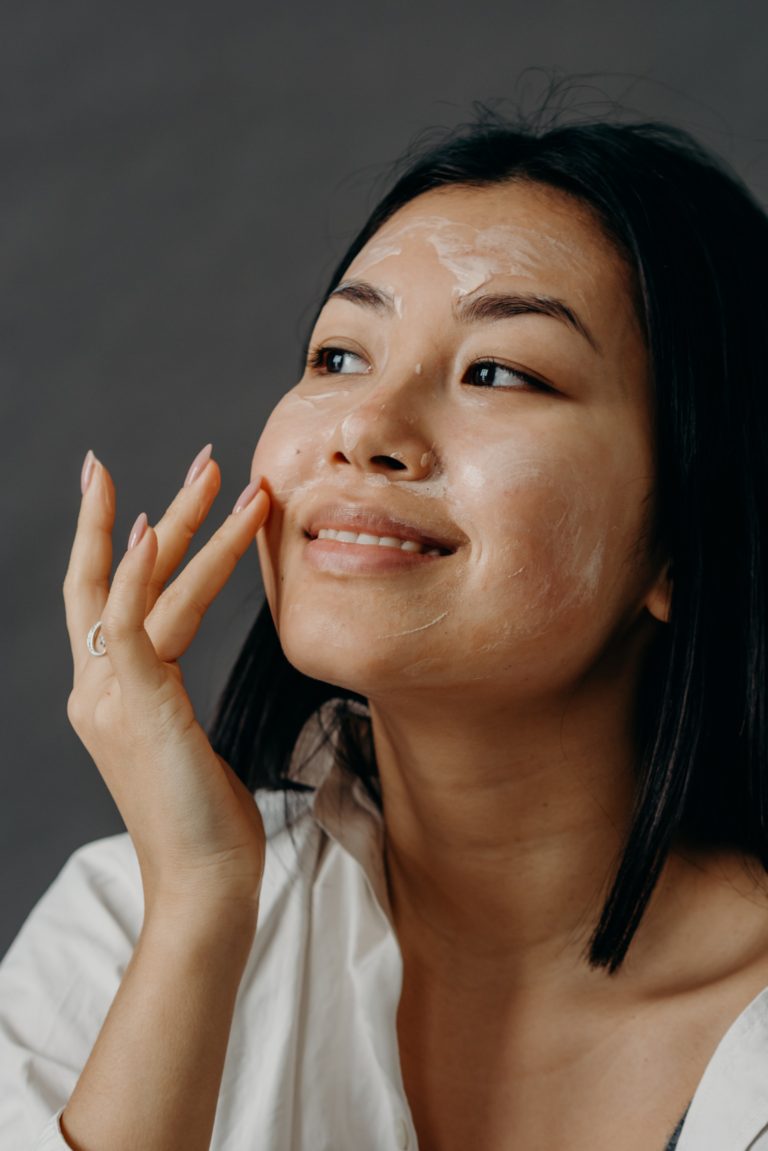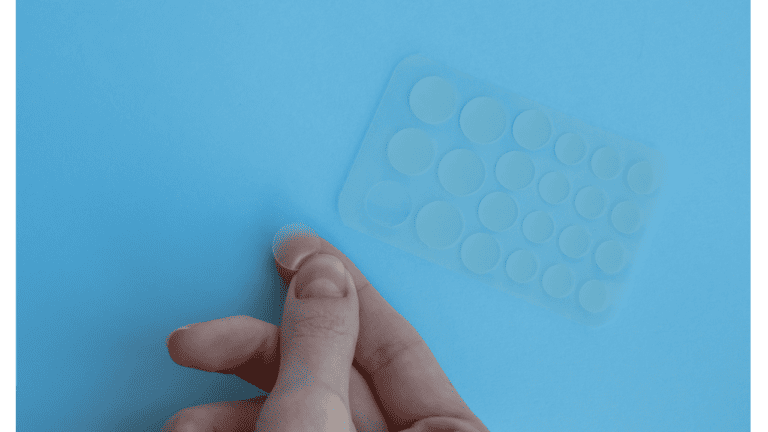Red Light Therapy is an amazing addition to skincare routines and it is very easy to get started. If you’ve just started using at-home red light therapy devices we recommend using red light therapy on your bare face, before any skincare products. However, there are a few caveats to this rule, and it’s also important to know how to take care of your skin after using red light therapy.
This guide is designed to help you understand how Red Light Therapy works and how it can be seamlessly combined with your daily skincare regimen to enhance skin health and appearance. Whether you are a skincare enthusiast or new to the concept, our aim is to provide you with practical, easy-to-understand information to make your skincare journey more effective and enjoyable.
Key Takeaways
- Red Light Therapy can significantly enhance skin health when integrated with regular skincare routines, focusing on consistency and compatibility with skincare products.
- Optimal product choices for Red Light Therapy include those rich in antioxidants and hyaluronic acid, while avoiding photosensitizing ingredients like certain essential oils and retinol.
- Safety and efficacy in Red Light Therapy usage are paramount, requiring adherence to recommended guidelines, professional advice, and careful consideration of at-home versus professional treatment options.
Integrating Red Light Therapy into Skincare Routines

Understanding the Basics
Integrating Red Light Therapy into your skincare routine is a promising approach to enhance skin health. Red Light Therapy, known for its healing and rejuvenating properties, can be seamlessly incorporated into your daily skincare regimen. The key is to understand timing, frequency, and the overall compatibility with your existing skincare products.
Timing and Frequency
The effectiveness of Red Light Therapy largely depends on consistent and correct usage. For best results, incorporate Red Light Therapy sessions 2-3 times a week. Each session should last approximately 10-15 minutes. It’s important to maintain this routine over several weeks to witness significant changes in skin health. Morning or evening sessions can be equally effective, so choose a time that fits seamlessly into your schedule.
Compatibility with Skincare Products
Most skincare products can be safely used alongside Red Light Therapy. However, to maximize benefits, apply Red Light Therapy on clean skin before using any serums or moisturizers. This ensures maximum penetration of light into the skin. Post-Red Light Therapy, you can apply your usual skincare products. Products containing hyaluronic acid or vitamin C are particularly beneficial as they can enhance the skin’s response to the therapy.
DIY vs. Professional Options
While professional Red Light Therapy treatments are available, at-home Red Light Therapy devices have made this therapy accessible and convenient. At-home devices vary in size, price, and intensity. While they are generally safe, it’s crucial to follow the manufacturer’s guidelines to avoid overexposure. Professional treatments, on the other hand, might offer more powerful results but at a higher cost and less convenience.
Red Light Therapy with Face Masks

Enhancing Red Light Therapy with Face Masks
Integrating face masks into your Red Light Therapy routine can significantly boost the benefits for your skin. Using Red Light Therapy just before your face masks, can help provide deeper nourishment, hydration, and rejuvenation. This combination not only enhances the effects of both treatments but also offers a luxurious, spa-like experience at home.
- Read More: Combining Red Light Therapy And Face Masks For Enhanced Results
- Read More: Which Red LED Face Mask To Buy: A Comprehensive Guide
Selecting the Right Face Mask
When choosing a face mask to use with Red Light Therapy, consider your specific skin needs. Hydrating masks with ingredients like hyaluronic acid are ideal for dry or dehydrated skin, while clarifying masks with charcoal or clay can benefit oily and acne-prone skin. For sensitive skin, opt for soothing masks with ingredients like aloe vera or chamomile.
Exfoliation with Red Light Therapy to Enhance Results
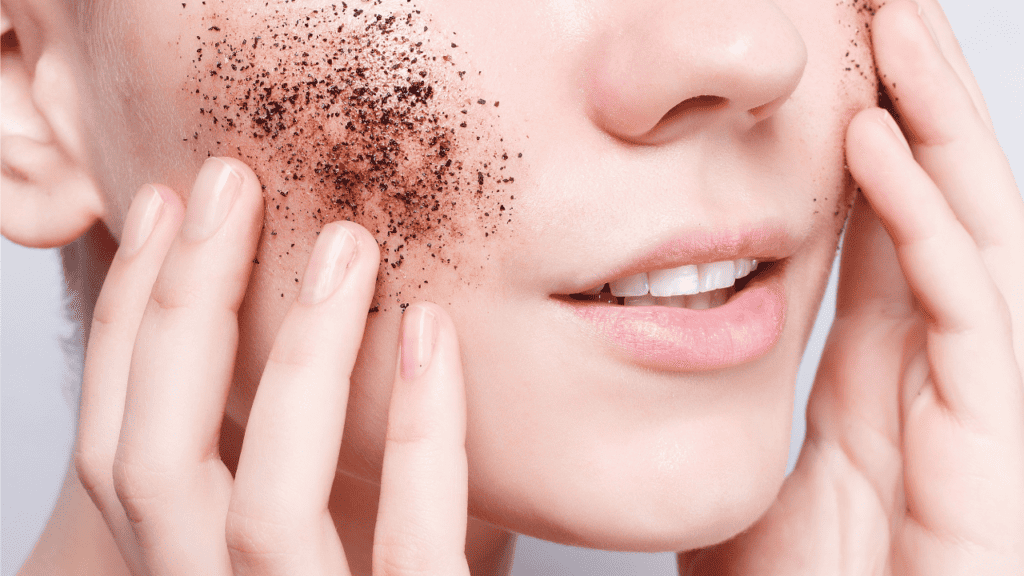
The Synergy of Exfoliation and Red Light Therapy
Combining exfoliation with Red Light Therapy can be a powerful duo in your skincare routine. Exfoliation removes dead skin cells, revealing fresher skin beneath, while Red Light Therapy works to rejuvenate and heal this new layer of skin. This synergy allows Red Light Therapy to penetrate deeper, past the level of dead skin cells, enhancing its efficacy in promoting skin health.
Choosing the Right Exfoliation Method
Before integrating exfoliation with Red Light Therapy, it’s important to select the right exfoliation method for your skin type. Physical exfoliants like scrubs are great for a more tactile approach, while chemical exfoliants (like AHAs and BHAs) offer a gentler, deeper cleanse. For sensitive skin, enzymatic exfoliants can provide a mild yet effective option.
Timing and Frequency
Timing is key when combining exfoliation with Red Light Therapy. Exfoliate before your Red Light Therapy session to prepare the skin. However, ensure to give your skin a brief rest post-exfoliation to avoid irritation. The frequency of exfoliation depends on your skin type – generally, once or twice a week is sufficient. Remember, over-exfoliation can lead to skin sensitivity and should be avoided.
Aftercare and Moisturization
Post-exfoliation and Red Light Therapy, it’s essential to hydrate and soothe the skin. Use a gentle, hydrating moisturizer to replenish moisture and protect the newly exposed skin cells. Ingredients like ceramides, hyaluronic acid, and soothing agents like aloe vera are excellent choices.
By incorporating exfoliation into your Red Light Therapy regimen, you can enhance the therapy’s effectiveness, leading to brighter, smoother, and more rejuvenated skin. Just remember to listen to your skin’s needs and adjust your routine accordingly for the best results.
The Importance of Red Light Therapy with Sunscreen
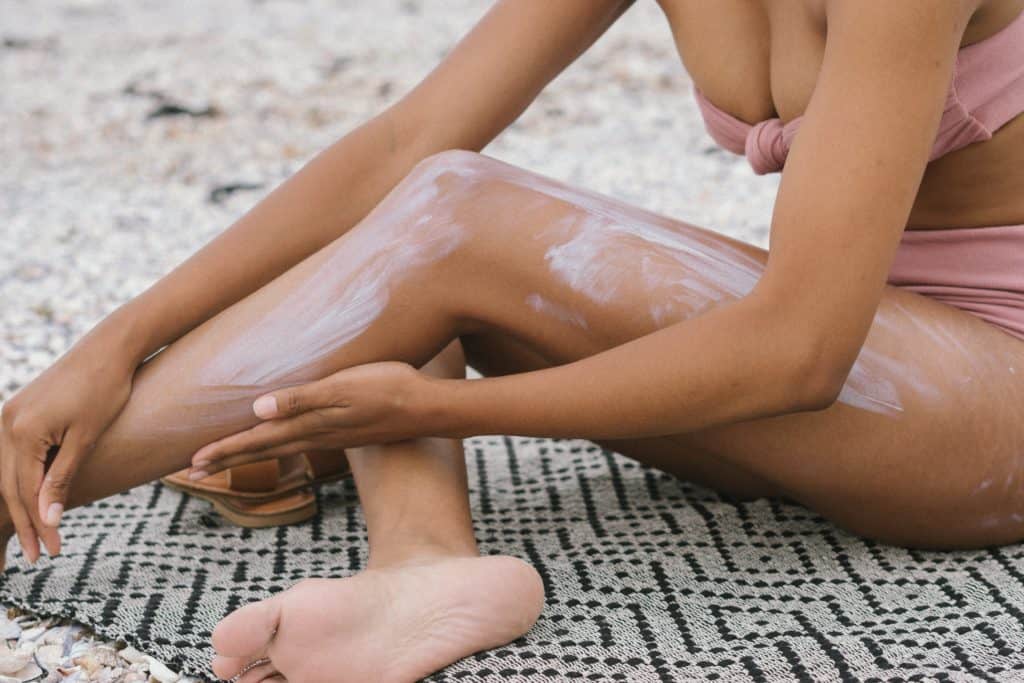
Balancing Red Light Therapy and Sun Protection
Incorporating Red Light Therapy into your skincare regimen while understanding the importance of sunscreen is crucial for maintaining skin health. While Red Light Therapy offers numerous benefits for skin rejuvenation and healing, protecting your skin from harmful UV rays is equally important. This section explores how to effectively combine these two elements in your skincare routine.
Enhancing Red Light Therapy Benefits with Sunscreen
Red Light Therapy is known for its ability to promote collagen production and reduce signs of aging. However, these benefits can be negated by UV damage if the skin is not adequately protected. Applying a broad-spectrum sunscreen daily, especially after Red Light Therapy sessions, is essential to safeguard the skin. This not only protects the skin from sun damage but also ensures the longevity of the results achieved through Red Light Therapy.
Choosing the Right Sunscreen
When selecting a sunscreen to use alongside Red Light Therapy, opt for a product that offers broad-spectrum protection against both UVA and UVB rays. Look for sunscreens with an SPF of 30 or higher for effective protection. For sensitive skin types, mineral sunscreens containing zinc oxide or titanium dioxide are recommended as they are less likely to cause irritation.
Skincare Products to Enhance Red Light Therapy Effects
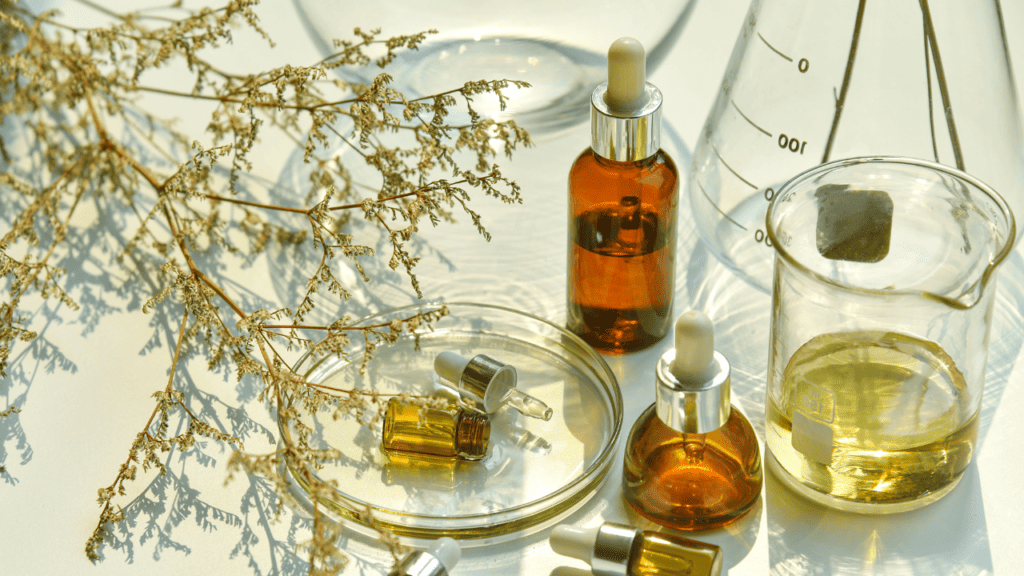
Optimal Product Choices
To amplify the benefits of Red Light Therapy, incorporating certain skincare products into your routine is advisable. Products rich in antioxidants, like vitamin C serums, can protect skin cells from damage and enhance collagen production. Similarly, hyaluronic acid can help in hydrating the skin, making it plumper and reducing the appearance of wrinkles.
Ingredients to Avoid
While most skincare ingredients are safe to use with Red Light Therapy, some should be avoided. Products containing photosensitizing agents, such as certain essential oils or retinol, might react adversely under red light. It’s advisable to use these products after a gap of a few hours from your Red Light Therapy session.
Balanced Skincare Routine
A balanced routine involving Red Light Therapy starts with cleansing, followed by the light therapy session, and then the application of skincare products. Ensure your routine is not overloaded with active ingredients that might irritate the skin when combined with Red Light Therapy. Simplicity is key.
Red Light Therapy: For Winter and Summer

Adapting Red Light Therapy to Seasonal Skin Needs
The efficacy and need for Red Light Therapy can vary with the seasons, addressing different skin concerns in winter and summer. Understanding how to adapt Red Light Therapy for these seasonal changes is key to maintaining optimal skin health throughout the year.
Red Light Therapy in Winter: Combatting Dryness and Dullness
During winter, skin often becomes dry and dull due to lower humidity levels and harsh weather conditions. Red Light Therapy can be particularly beneficial in this season by promoting circulation and collagen production, which aids in healing and hydrating the skin. Integrating Red Light Therapy into your winter skincare routine can help counteract the seasonal effects, leaving the skin more radiant and moisturized.
Red Light Therapy in Summer: Repairing and Soothing
In contrast, summer brings increased exposure to sunlight and UV rays, which can lead to skin damage and premature aging. Red Light Therapy during summer plays a crucial role in repairing and soothing sun-damaged skin. Its healing properties help in reducing inflammation and promoting skin regeneration, making it an excellent post-sun exposure treatment. Additionally, Red Light Therapy can help in controlling excessive oil production, a common summer skin concern.
Adjusting Frequency and Intensity
The frequency and intensity of Red Light Therapy might need adjustment based on seasonal requirements. In winter, more frequent sessions can help in combatting dryness, while in summer, a focus on post-sun exposure treatment might be beneficial. Always listen to your skin’s needs and adjust accordingly.
The Importance of Skin pH Balance in Red Light Therapy

Understanding Skin pH and Red Light Therapy
Maintaining the pH balance of your skin is crucial when incorporating Red Light Therapy into your skincare routine. The skin’s natural pH typically ranges from slightly acidic to neutral. This balance is essential for protecting the skin from harmful bacteria and environmental stressors. Red Light Therapy works optimally on skin that maintains its natural pH, as it ensures the skin barrier is healthy and receptive to the therapy.
Impact of pH Imbalance on Red Light Therapy Effectiveness
An imbalanced skin pH can lead to various skin issues, such as dryness, irritation, or increased sensitivity. These conditions can potentially reduce the effectiveness of Red Light Therapy, as compromised skin may not respond well to the treatment. Therefore, preserving the natural pH balance is key to maximizing the benefits of Red Light Therapy, ensuring better skin health and more visible results.
In conclusion, keeping the skin’s pH balance in check plays a significant role in the effectiveness of Red Light Therapy. By ensuring your skin remains healthy and balanced, you can enhance the rejuvenating and healing benefits of Red Light Therapy, leading to more radiant and resilient skin.
Precautions and Safety Tips
Understanding the Risks
While Red Light Therapy is generally safe, understanding potential risks is crucial. Overuse of Red Light Therapy can lead to skin irritation or damage. It’s important to follow recommended usage guidelines and start with shorter sessions to gauge skin sensitivity.
Consulting Professionals
Before starting Red Light Therapy, particularly if you have underlying skin conditions, consult with a skincare professional. They can provide personalized advice and ensure that Red Light Therapy is a suitable option for your skin type and concerns.
Safety Measures for Home Use
When using Red Light Therapy devices at home, always adhere to safety instructions. Do not look directly into the lights and consider wearing eye protection. Ensure the device is FDA-approved and from a reputable manufacturer. Keep the device clean and store it properly to maintain its effectiveness.
By following these guidelines, you can safely and effectively integrate Red Light Therapy into your skincare routine, enhancing the health and appearance of your skin.
Conclusion
Incorporating Red Light Therapy into your skincare routine can be a game-changer in achieving healthier, more radiant skin. Through this guide, we’ve explored how to effectively integrate Red Light Therapy, the best skincare products to pair with it, and important safety considerations. Remember, consistency and the right balance of products are key to maximizing the benefits of Red Light Therapy. As with any skincare practice, it’s crucial to listen to your skin and consult professionals when needed. Embrace this innovative approach to skincare and enjoy the journey towards a more luminous, rejuvenated complexion. Happy skin caring!
Frequently Asked Questions (FAQs)
How often should I use Red Light Therapy in my skincare routine?
It’s recommended to use Red Light Therapy 2-3 times a week, with each session lasting about 10-15 minutes, to see noticeable improvements in skin health.
Can I use my regular skincare products with Red Light Therapy?
Yes, most skincare products are safe to use with Red Light Therapy. However, it’s best to apply Red Light Therapy on clean skin and then follow up with your skincare products.
Are there any specific ingredients to avoid when using Red Light Therapy?
Avoid using products with photosensitizing ingredients, like certain essential oils and retinol, immediately before or after Red Light Therapy sessions.

